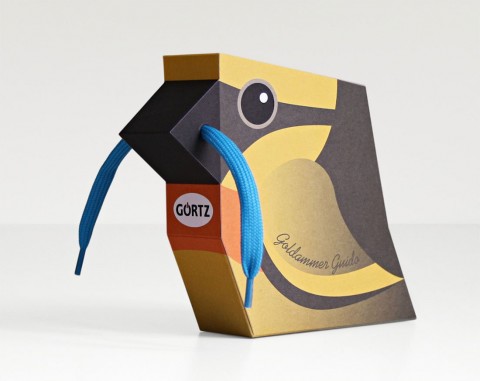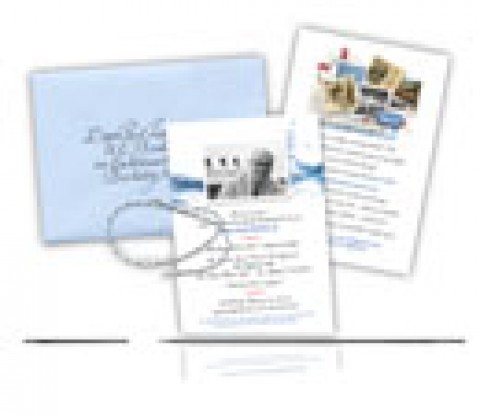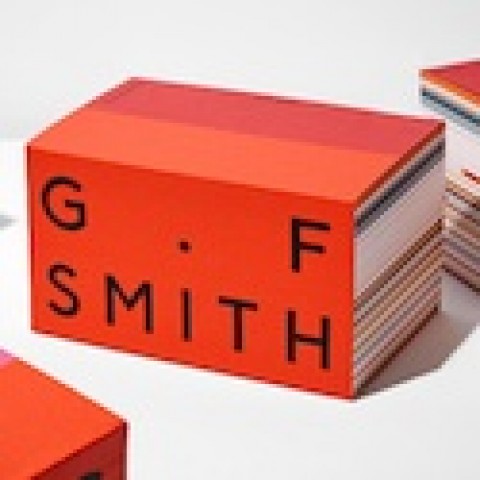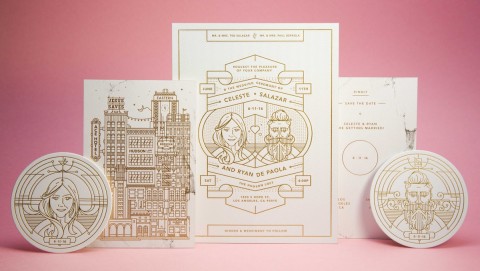So you ARE tired of using the same three folds! We suspected as much, but your enthusiastic response to our webinar “Unleash the Power of Specialty Folds” was quite the confirmation.

It seems like you have to find a balance between complexity/cost and benefit. Are there one or two styles you find to be particularly balanced?
This is a great question and a tough one at the same time. Folding is really just a component of the print communication process. It can work with you or against you, just like a bad color scheme, or an amazing photo, or type that’s too small – the right or wrong choice of fold can greatly affect the success of the piece.
So, you really have to weigh your options. That said, I think there are many things that we do as designers that needlessly increase the cost of a job, like inefficient mailing formats that require mailing surcharges or finished sizes that create a lot of paper waste.
When you are careless with your planning, the specialty folds can become extremely cost prohibitive; but if you are cautious in your formats and paper usage, the gap closes quite a bit.
But to answer your question, I think stepped accordions, in all formats, are practical and stylish, and they can be automated in many cases. The same goes for the open gate – a wonderful fold that can be automated or hand folded, and provides a lot of creative possibilities and a great reveal.
Years ago, some of these folds and diecuts were patented and available through only one or two suppliers. Is this still true?
Most specialty folds are not patented. This includes iron crosses, swinger folds, petal, tulip, meandering accordion, etc., etc.
Patented folds will have patent information on them in small print. Another clue is if the name of the fold has a register mark or trademark. It’s not a guarantee that it’s patented, but it’s time to start looking if you find it.
There are also different types of patents – design, utility, and retail, for example – and the terms vary. So, don’t just assume that anything interesting is patented. And, even if something is patented, don’t assume it’s out of your reach.
Many of these companies that create the patented solutions are very easy to work with, and can supply you with the template, design services, production assistance and additional technologies to increase your response rate.
Most have developed budget-friendly solutions, so it may be more affordable than you think. In my opinion, there’s also a lot more competition in the market these days, which can make the cost of one of these exciting solutions more competitive, so do your research before ruling out the opportunity.
Are printers generally able to execute unique specialty folds?
If by execute, you mean automate, then the answer is no. But if by execute, you mean, help with the dieline and print/score, hand fold, then I would say in many cases yes.
The reason I can’t say “in all cases” or even “in most cases” is that all printers are different, and some printers love the challenge of specialty work. If you throw a twist fold at your neighborhood quick print shop, you may get laughed out the door; but if you find a skilled commercial printer, you’ll be fine.
If you need help with the templates, you will need to at least sketch or show a photo or video of the fold, as many of the specialty folds featured in the presentation are not mainstream enough to be known by name by the vast majority of print service providers.
We also can offer assistance with templates at foldfactory. We’re getting ready to release a new collection of specialty templates to help with this very issue, so keep checking back, or create a free foldfactory account, and you’ll be the first to know.
Are there additional costs for reversing folds in midstream?
Every job is different, and how each printer approaches it can be different, too. In most cases, if you need to do something really tricky (like reverse direction of an accordion like the “Meandering Accordion” I showed in the presentation), unless the quantity is very high, tricks and techniques like that are done by hand. This will be reflected in the cost. However, it’s nice to have the names of a few specialty binderies in your back pocket because they may be able to automate the process for you.
As designers, how do we get grain information? Whose responsibility is it?
The grain direction and job imposition is the responsibility of the printer. However, awareness of grain direction and its affect on the folded sheet is a great thing to discuss with your printer.
If you have right angle folds, and lots of heavy ink coverage and/or a heavy sheet, among other things, you should ask your printer how they plan to run the job, if they foresee any issues with the quality of the fold, or if they recommend scoring.
Many of the designs fold into a perfect square. Is that against postal regulations to have a square envelope?
Square format mail is perfectly acceptable; however, it’s not machinable.
The mail processing equipment relies on the rectangularity of the piece. The long dimension is the dimension that it orients itself to in order to read the address. A square piece (or any piece outside the required width-to-height aspect ratio) does not have the proper proportions for automated mail.
The non-machinable status of a mail piece will cost you .20 per piece, which may not be a big deal for 500 pieces (an extra $100); but for 50,000 pieces, that’s an extra $10,000!
One more thing to note – many of the samples I showcased were in square format by the choice of the designer, but the folding style itself did not require that it be finished as a square. In many cases, you can achieve a fabulous fold in a mail-friendly format.
Can I fold against the grain on Classic Columns? Is there a special score technique for this?
When folding with the grain, you should score when you are working with heavier sheets, when there is hand folding involved, or when you have ink coverage on or critical color breaks butting up to the fold.
When folding against the grain, scoring will be recommended in most cases because scoring compresses the fibers in the sheet, which helps assist with the folding process and greatly reduces cracking.
There are times when your printer actually recommends folding against the grain. The grain direction not only influences the paper’s folding ability, but also its strength.
Granted, folding and scoring with the grain will provide you with a smoother fold, but paper folded against the grain enjoys increased durability and resists tearing.
 |
To listen …If you missed “Unleash the Power of Specialty Folds,” it’s not too late! Just click here to listen to the full webinar. |












Given the financial times and some budgetary concerns some may have, please do take a moment to discuss these ideas with your Production team as well and allow them to make a few calls. Ones that could mitigate some “budget to invoice” questions later and we all know how much we all LOVE those inquires… 🙂 Some folds, although tremendous in the projects execution, may be cost prohibitive. Folds that are not machine insert able must be done by hand and could impact your budget tremendously. This increase could not only impact your production budget, but also, as mentioned in the article above, your postage budget as well. So take those few minutes, pull your production team in early and allow them to do their due diligence to help the team create the best, most cost effective project that will generate the best results for the client.
Well said, Scott! It always pays to do a little planning at the front end to make sure everyone is on the same page and agrees on budget. Putting a few heads together is a good thing.